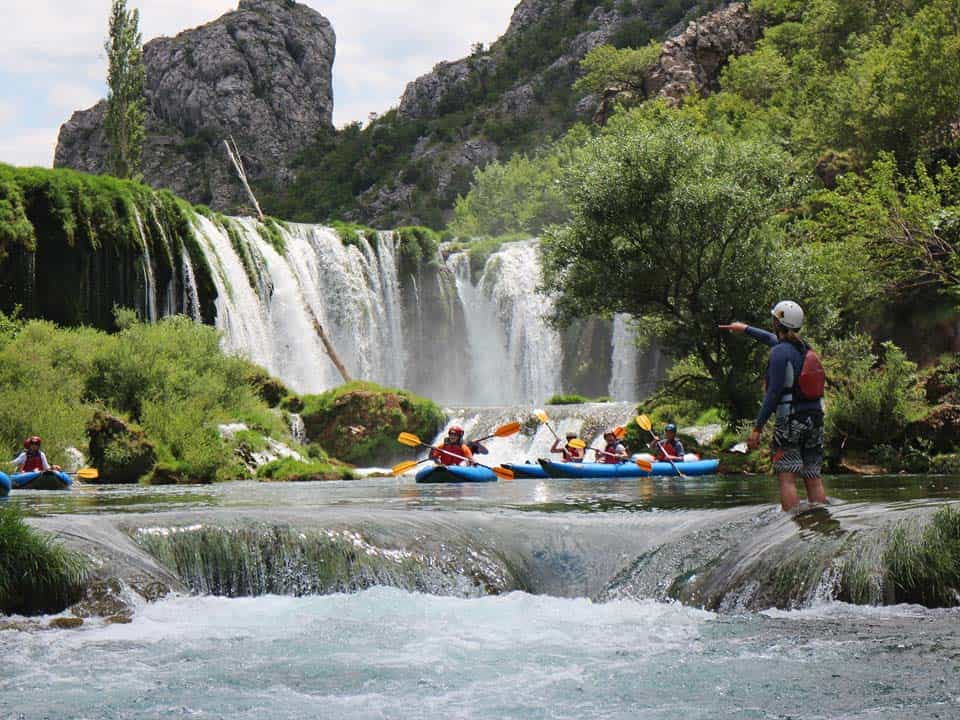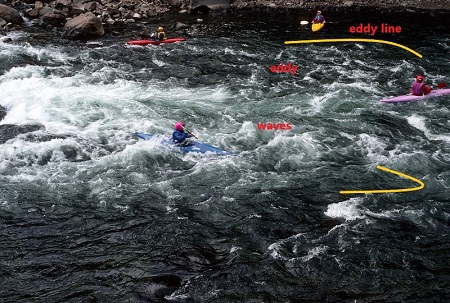Whitewater kayaking is a sport that involves paddling on moving water, often Class 3 and Class 4 rapids. It can be a thrilling way to explore rivers, canyons, and gorges, and a great way to get close to nature. But it can be a little intimidating if you’ve never done it before.
If you’re new to white water kayaking, or if you want to brush up on your skills, take some whitewater kayaking lessons first. From my experience, I found some of the techniques that could help whitewater kayakers if they learn in their whitewater kayaking lessons. So stay till the end of the article to know what are the lessons that could be learned for fearless kayaking.
Table of Contents
Whitewater kayaking lessons to learn
One of the first things that you’ll learn in white water kayaking is how to use your paddle. In a calm river, you may not use your paddle frequently, but in whitewater, you’ll use it to steer your kayak, brace yourself against rapids, and maneuver through tight passages. You’ll also use your paddle to help you get out of trouble and to support yourself if you fall out of your kayak. It’s important to remember that your paddle is just a tool; it doesn’t do the hard work.
Learn The Basics First
Whitewater kayaking requires more confidence than flat water kayaking. That’s why you need to learn some basics of kayaking first. Practice some of the basic paddling techniques like forward strokes, rearward strokes, etc. on the flat water. Learn how to read a river, which way is safer for you to go, and which are the things to consider during whitewater kayaking. After learning some basics and you feel confident then you can hit whitewater to gain some amazing beauty of the running river.
Learn Some Important Lessons To Become Efficient:
Draw Stroke
The draw stroke is one of the most fundamental strokes in whitewater kayaking. It is used to pull water in front of the boat, which allows the kayaker to turn the boat. And makes the kayaker face the direction they were moving. The draw stroke is used to initiate a turn and maintain the speed. If you turn with a sweep stroke or a backward stroke you change the direction but you don’t keep your speed.
C- Stroke
C stroke is the combination of the draw and forward stroke. It involves performing a C-shaped movement with your paddle in the water to generate thrust. C-stroke is often used as a way of getting through particularly difficult rapids or to increase speed in calmer water. If you don’t use a C stroke you can make a turn with the normal turning method but in that condition, you have to spend more energy than a c stroke. You will skid out and will never have a perfect turn.
Eddy Turns And Peel Out
Eddies are formed due to obstruction in the flow. They are opposite to the main flow. Normally eddies are the areas where paddlers take a break for the next point. Eddy turns come into the eddy whereas peel out goes into the river to the main flow from the eddy.
Eddy turns and peel-outs are two different maneuvers commonly performed in whitewater kayaking. In an eddy turn, the paddler makes a hard, 90-degree turn in the current, usually while holding the boat in position on the riverbed. This maneuver is used when the kayaker wants to shift position in the kayak without losing speed and turning broadside to the current. In a peel out, the paddler accelerates hard, sometimes to the point of capsizing the kayak, in order to build speed and move closer to the river’s edge.
Watch this video to learn how to perform this.
Torso Rotation
When you kayak on flat water, you don’t need to worry too much about your torso rotation. But if you’re paddling down a river, your torso rotation is going to be your most powerful tool for staying upright. In white water kayaking, you’ll learn a technique called the Torso Rotation Stroke. This involves rotating your torso so that your center of gravity moves over your paddle and closer to the center of your boat.
In whitewater kayaking, you use your torso to generate power. Your hips and legs are the base of your kayak, which allows you to make turns and progress down the river. Your hips, not your shoulders, turn your kayak in whitewater. When you want to turn your kayak, you use your torso to rotate your hips, not your shoulders. Your torso should rotate around your hips, which allows your arms to act more like paddles. Things like you put your paddle inside the mud and pull your torso toward the paddle.
Whitewater Kayaking Techniques
In whitewater kayaking, you need to use the right techniques to stay safe and avoid problems. These include how you use your paddles, how you position your kayak, and how you steer and maneuver it. You may also need to know other techniques such as how to climb out of a hole, and how to get out of a flipped kayak.
Positioning On Your Kayak
When you’re paddling in white water, the first thing that you need to do is position your kayak correctly. You want to find a place in the river where the current isn’t too strong. This is often near a cliff or a drop, but it doesn’t have to be. You just want to be close to the edge so that you have room to maneuver.
When you’re in the water during a kayaking lesson, your instructor will show you how to position your kayak. You need to get in the right shape so that your kayak balances well and you have good control. You also need to position your kayak so that you have enough room to maneuver, but not so much space that you’re in danger. Your instructor will help you figure out the best position for your body and your kayak.
Upper Body Positioning
Good upper body positioning is important for strokes. This positioning helps keep your body in the upright position. Leaning off to the side and slouching back is the bad positioning for whitewater kayaking. These open up some hazards for you to fall into one side or the other depending on which way the current is pushing your boat. Make sure that you are well balanced and your hips are independent of your upper body. Practice this in conjunction with torso rotation.
Maneuvering A Whitewater Kayak
As you get into whitewater kayaking, you’ll want to think about how you steer your kayak. The right technique can make a big difference in how you handle rapids. Steering is about making the right choices at the right time. For example, if you want to go over a drop, you need to make the right choice about which way to steer. Choose the V of the flow for a safe drop. what is a V of a flow? Learn this from river reading below.
Once you’ve gotten the basics of kayaking down, it’s time to learn how to control your kayak in Class 3 and Class 4 rapids. In these rapids, the water moves faster than you can paddle with a paddle, and you need to use your body to control your kayak. The most basic technique is to use your body to control your kayak’s rotation. This means that you use your arms and torso to turn your kayak and it’s the best way to control your kayak in Class 3 and 4 rapids.
Getting Out Of Flipped Position
If you do end up in a flipped kayak, you have a few options. The first is to stay where you are and ride it out. This is usually not a good idea because the longer you wait before getting out of the flipped kayak, the higher the water level will get and the more difficult it will be to get out. If you can’t get yourself out of the flipped kayak, you should try to right it as soon as possible.
Reading The River
In whitewater kayaking, you need to know the different kinds of terrain, the different obstacles that you might encounter, and how to navigate these obstacles. You need to know how to read a river stream for whitewater kayaking, in order to know where you might need to turn or head in order to avoid problems.
Finally, I hope you got some idea about what to learn in the whitewater kayaking lessons. You can practice these in the observation of your kayaking mates or you can take a course from a professional white water kayaking instructor. But if you have time my suggestion will be to make your hand skill first on the flat water, learn all the strokes there, and then head over to class 1 and class 2 first. If the time comes when you are confident enough then you can start to enjoy the heavy stream of water in class 3 or class 4 rapids. Good luck!


Amazing issues here. I’m very happy to look your article.
Thank you a lot and I am looking forward to touch you.
Will you kindly drop me a e-mail?
Pingback: Inflatable vs hard kayak: which one is the best? - Safekayaking
Very good website you have here but I was wanting to know if you knew of
any forums that cover the same topics discussed in this article?
I’d really like to be a part of group where I can get responses from other knowledgeable people that share the same interest.
If you have any suggestions, please let me know. Appreciate it!